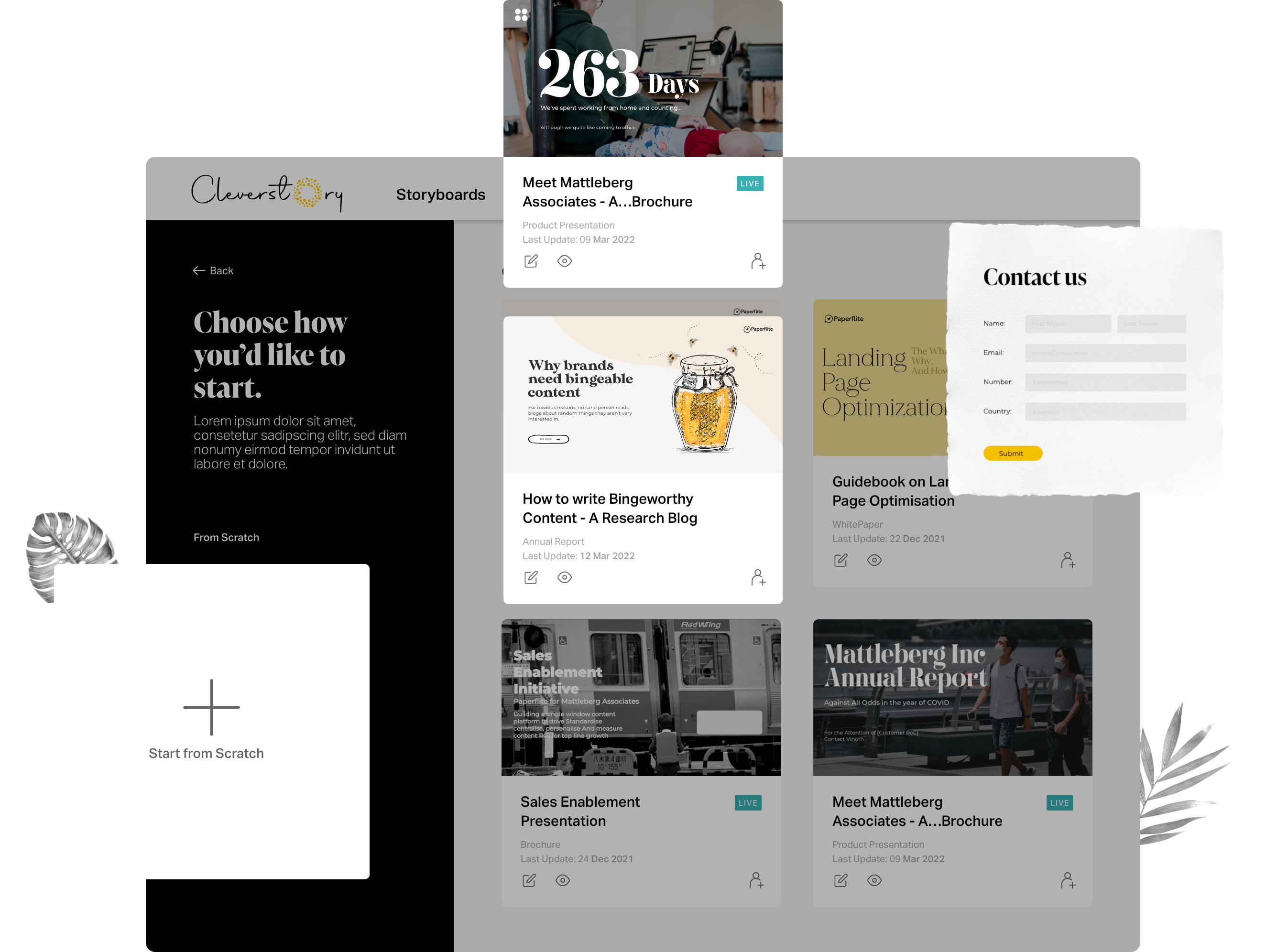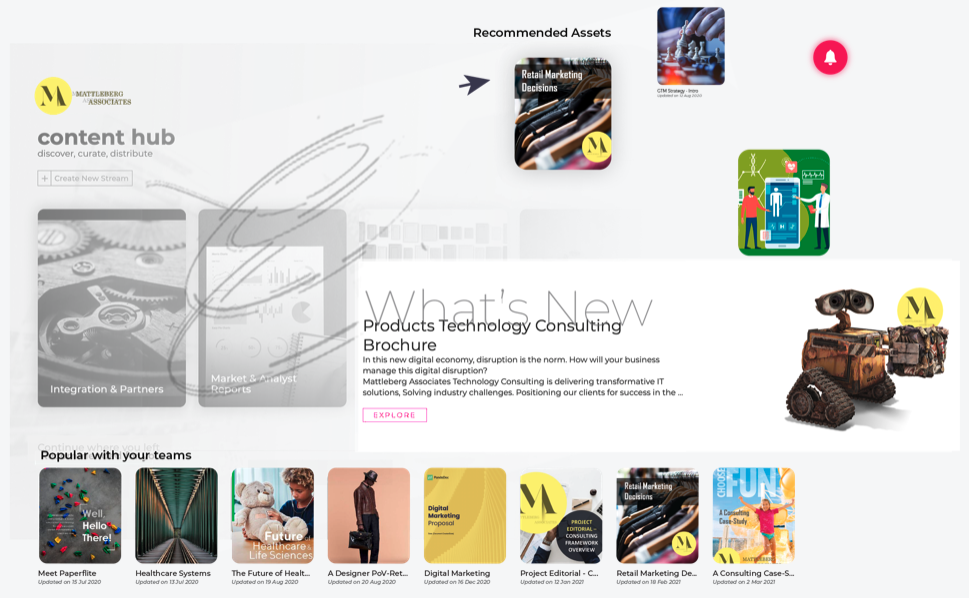Revenue Enablement vs Sales Enablement: Understanding the Key Differences
Revenue enablement vs sales enablement, the key differences, and how to implement it for your business.
In today's fast-paced business world, companies are constantly searching for ways to increase revenue and drive growth. Two popular methods are sales enablement and revenue enablement.
While the two terms may sound similar, they differ in their focus and goals. In this article, we will define revenue enablement and sales enablement, explain why the difference matters for businesses, and provide recommendations for implementing these strategies.
What is Sales Enablement?
Sales enablement is a process that provides sales teams with the tools, training, and resources needed to close deals effectively. The goal of sales enablement is to improve the performance of the sales team and increase revenue.
Key components of sales enablement include training and content creation, such as playbooks, case studies, and competitive analyses. By using these tools, sales teams can better understand customer needs, identify pain points, and tailor their approach to close more deals.

Benefits of sales enablement include increased sales productivity, shorter sales cycles, and higher win rates. However, implementing sales enablement can also present challenges, such as ensuring that the content is relevant and up-to-date, and that the sales team is engaged and actively using the resources provided.
Get Granular Information About Every Content Being Sent
What is Revenue Enablement?
Revenue enablement takes a broader view of the customer journey, focusing on the entire process from initial contact to post-sale. The goal of revenue enablement is to improve business growth and development by aligning sales and marketing teams and optimizing the entire customer journey.
Key components of revenue enablement include data and analytics, such as customer feedback, website traffic, and social media engagement.
By using these tools, revenue enablement can help companies better understand customer behavior and preferences, and develop targeted marketing and sales strategies. This can lead to more effective lead generation, improved customer retention, and increased revenue.
Benefits of revenue enablement include a more holistic view of the customer journey, improved customer experience, and better alignment between sales and marketing teams.
However, implementing revenue enablement can also present challenges, such as the need for strong data and analytics capabilities and the need to align sales and marketing processes.
Sales vs Revenue Enablement: Key Differences
While sales enablement and revenue enablement share some common goals, there are key differences between the two approaches. Some of the most notable differences include:
- Focus: Sales enablement focuses on the sales team, while revenue enablement takes a broader view of the entire customer journey.
- Metrics: Sales enablement tends to focus on short-term metrics like quota attainment, while revenue enablement takes a more strategic, long-term approach.
- Technology: Revenue enablement relies more on technology and data, while sales enablement often focuses on training and content.
How revenue enablement outperforms sales enablement?
Sales enablement is a process of providing sales teams with the necessary tools, content, and information to effectively engage with prospects and close deals. Revenue enablement, on the other hand, is a more holistic approach that aligns all revenue-generating teams to achieve business outcomes.
While sales enablement focuses on the sales process, revenue enablement takes a broader view of the entire customer journey and seeks to optimize the customer experience at every touchpoint.
In terms of key performance indicators (KPIs), sales enablement typically focuses on metrics such as deal size, win rates, and sales cycle length. Revenue enablement, on the other hand, takes a more customer-centric approach and focuses on KPIs such as customer lifetime value (CLV), customer acquisition cost (CAC), and customer retention rate.
Revenue enablement also looks beyond the sales function to incorporate other revenue-generating departments such as marketing and customer success.
Ultimately, the key difference between sales enablement and revenue enablement is that the former is a tactical process aimed at improving sales performance, while the latter is a strategic process aimed at improving business outcomes.
Revenue Enablement is the Future
As businesses become increasingly customer-centric, revenue enablement is emerging as a critical strategy for driving growth and development.
By taking a holistic view of the customer journey and using data and analytics to drive decision-making, revenue enablement can help businesses improve customer experience, increase revenue, and stay ahead of the competition.
What processes and Life cycles are supported by revenue enablement?
Revenue enablement is a holistic approach that covers the entire customer journey. The goal is to ensure that each customer interaction is tailored to their needs, so they remain engaged throughout the entire lifecycle. The processes that are supported by revenue enablement include marketing, sales, and customer service.
By aligning these three functions, organizations can provide a seamless experience for their customers.
Revenue enablement supports the customer journey from the initial awareness of a product or service to the final decision to purchase. It involves providing the right content, training, and tools to each stakeholder in the customer journey.
By doing so, revenue enablement ensures that every touchpoint is optimized to deliver the best possible experience to the customer.
Sales enablement is a critical part of revenue enablement, but it is only one piece of the puzzle. Revenue enablement is more holistic and strategic, with a broader view of the entire customer lifecycle.
Sales enablement focuses on the sales team, while revenue enablement looks at the big picture and ensures that each interaction supports the overall goal of growing revenue.
Which Approach is Right for Your Business?
When choosing between sales and revenue enablement, there are several factors to consider. Some of these factors include the size of your organization, your industry, and the specific goals you hope to achieve.
For instance, if you have a large sales team that needs training and support, sales enablement might be a good choice. However, if you are looking to optimize the entire customer journey, revenue enablement may be the better option.
Another important factor to consider is the level of support and resources you have available. Revenue enablement often requires more investment in technology and analytics, while sales enablement may be more focused on training and content.
You need to ensure that you have the resources and infrastructure in place to support the chosen approach.
To get a better idea of what approach might work best for your business, you can look at case studies or examples of companies that have successfully implemented each approach. By studying these examples, you can learn about the challenges and benefits of each approach and how they might apply to your business.
Conclusion:
Revenue enablement is a holistic approach to generating more revenue and creating a consistent customer journey that drives growth and development.
Unlike sales enablement, which focuses on the sales team, revenue enablement takes a broader view of the entire customer journey, including marketing, sales, and customer success.
To implement revenue enablement effectively, businesses need to focus on the customer journey and use technology to gather and analyze data to create a personalized experience for each customer.
That's where Paperflite comes in - it provides a suite of features that help businesses implement revenue enablement strategies.
Paperflite's content management system enables businesses to organize and distribute content at scale, ensuring that the right content is delivered to the right prospect or customer at the right time.

When it comes to choosing between sales and revenue enablement, businesses should consider factors such as their target audience, their sales process, and their marketing strategy.
They should also examine case studies and examples of companies that have successfully implemented each approach to understand what worked and what didn't.
In conclusion, revenue enablement is the future of sales, and businesses that implement it successfully will be well-positioned for growth and success.
By leveraging the right technology, such as Paperflite, businesses can create a personalized and consistent customer journey that drives revenue and business growth.
